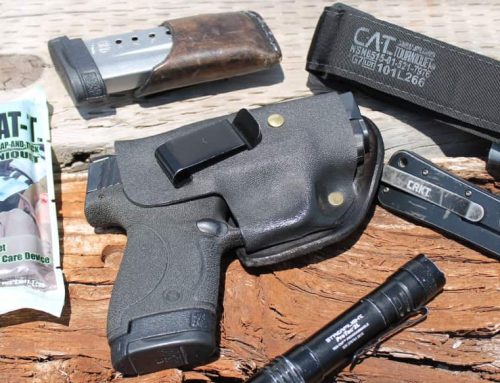Flight or fight: Safety tips for solo runners
By Eileen Abbott
Charlottesville has a robust running community, but it’s not always possible to run with a buddy or a group. And if you’re out solo on the road or a trail, you should know how to run safely. “I certainly do not think running in Charlottesville poses any unique safety challenges,” says Jaime Kurtz, vice-president of the Charlottesville Track Club. “But I suspect that we can all get a little complacent when it comes to assessing risk and protecting ourselves.”
That’s why the track club decided to offer its members a personal safety workshop. “Few people, especially women, can navigate life without encountering some form of harassment—or a violent attack, at worst,” says Julie Morrill, an avid runner, expert in Krav Maga fighting, and founder of Train Your Roar, which offers self-defense training.
On a recent Monday evening, Morrill taught hands-on safety techniques to a roomful of female track club members. “I run by myself a lot, and I don’t always feel comfortable,” says Marie Dorroh. “I run with mace, but I’d rather have other options.”
Morrill offered these six essentials to personal safety:
1. Stay alert
This is Morrill’s top piece of advice. “Be aware of your surroundings,” she says. “Being aware helps you recognize potentially dangerous situations early, so that you can avoid them or prepare for them. Being aware also changes your posture to make you look less like a victim and appear more confident.”
Many runners often only look straight ahead to guide them along their chosen route, but awareness calls for more than this. Morrill recommends using all of your senses to assess what is around you. Scan the scene in front of you as if it were a panorama. Look and listen for unusual movement and sounds.
None of this should prevent you from enjoying your run, says Morrill, who urges runners not to be “paranoid that a bad guy is lurking around every corner.”
2. Project confidence
A runner who exudes vulnerability is more likely to be victimized. On the flip side, Morrill says, “No one wants to mess with someone who is alert, cool, and collected.”
Avoid giving off non-verbal cues, including running with your head down and a halting gait, or appearing to be lost.
Morrill says that if you encounter a “shady-looking character” while running, be proactive. “Rather than lowering your eyes and avoiding his gaze, belt out a confident, ‘Hello!’ and keep running strong,” she says.
This response robs a potential attacker of the element of surprise, and gives notice that a runner is “a force to be reckoned with,” Morrill says. “He should move on—you are not a victim!”
3. Trust your instincts
“You know that little feeling in the back of your mind that tells you something is just not right?” Morrill says. “Trust these feelings and learn to act on them.”
Take some time to think about threatening situations you might face, and consider how you’d respond. “If your intuition tells you something is wrong,” she says, “How would you act? What would you do?”
4. Run like hell
“Fight or flight is instinctual,” Morrill says. “The safest response is usually flight, as we do not know our attacker’s intentions, level of fight training, or if he is carrying a weapon.”
If you feel like an attack might occur, take off. “Never stop if someone yells, ‘Stop!’” Morrill says. “Keep running until you are in a safe place.”
She recommends preparing for an escape by practicing sprints or up-tempo distance running.
5. Be aggressive
“We still live in a society that teaches us, especially women and girls, to be nice, friendly, accommodating, and polite,” Morrill says.
A potential attacker depends on this, so runners should mentally contradict the stereotype, preparing to be assertive and even aggressive. “When someone makes you feel uncomfortable, it is not the time for being polite,” she says. “Do not be afraid of hurting someone or being considered ‘mean.’ If you feel unsafe, leave. If someone is harassing you, shout, ‘Leave me alone!’ and run away.”
6. Learn to fight
“The military has an expression: You fight how you train, so train how you want to fight,” says Morrill, who is trained in the Krav Maga methods used by the Israeli military. “In other words, by training soldiers in a way that simulates a real battlefield, they are better prepared to fight in real battle.” The same is true for a runner’s self-defense. Getting instruction in boxing or a martial art, even just a class or two, “will increase your chances of getting away safely.”
Source https://www.c-ville.com/flight-or-fight-safety-tips-for-solo-runners/








